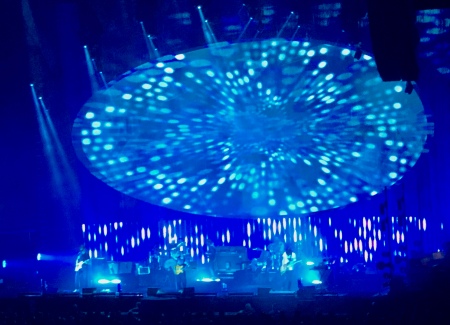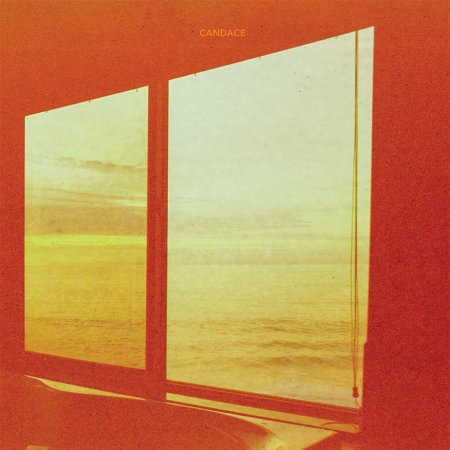
Who are we kidding? Everyone knows the best record of 2018 is the reissue of The Beatles. Unless it was Bob Dylan’s More Blood, More Tracks. But given that technically neither album saw its original release in 2018 — the Beatles record came out half a century ago, and you’d be middle aged if you were born the year of Dylan’s album — let’s make way for the young ‘uns. And in this, 2018 was a good vintage.
1. Ty Segall Freedom’s Goblin
We could not be happier that Ty released a double album that was chock full o’ classic songs, cooked up on his own or with the usual suspects, Mikal Cronin in particular. We have been waiting for the better part of the decade for Ty to put everything together, and on Freedom’s Goblin he really did. Full-band renderings of complete songs, stylistic impatience that heard him sound like Neil Young and No Wave bands nearly back to back, Freedom’s Goblin cemented Mr. Segall’s standing as his generation’s brightest light, even as it stood heads and tails above all others as the Album of The Year. That he subsequently released a prett-y fine rec of covers only brought even deeper appreciation for his version here of Hot Chocolate’s “Every 1’s A Winner,” which would have had Prince clamoring to join Ty’s funky band.

2. Amen Dunes Freedom
When Damon McMahon released Love in 2014, it might have landed from outer space; it was so original, so unique in its Freak Folk sound that it was hard to get a grip on it. We looked forward to its follow up, and when it didn’t arrive the next year or the one after that, we got concerned. In January, though, “Miki Dora” was released and it was astonishing, a song about a real-life ’60s surfer that literally crested at the end, crashing on the beach with melody and power sufficient to sweep us all to sea. Freedom is a beautiful, ambitious and accomplished album, an attempt by McMahon to reach a bigger audience. It succeeded on all fronts: strong songwriting, incredible singing, and a band that Dylan could snatch for his Never Ending Tour and it would all make sense.

3. Menace Beach Black Rainbow Sound
We admit that we’d never heard of the Leeds duo until Brix Smith, ex-Fall and current chief pirate in Brix & the Extricated, tweeted in August that she’d contributed to the new Menace Beach album. One listen and we canceled our summer plans. Black Rainbow Sound may have spent more time in our earbuds than any other record the whole year long. While there were some reference points those of us lucky enough to have heard Orchestral Manoeuvres in the Dark the first time round, and even Young Marble Giants, could use to place them in their proper taxonomy, we’ve previously written that the combo of AC Newman and Neko Case, otherwise known as the New Pornographers, may be the portal through which to approach Menace Beach. All we know is that there wasn’t an album we listened to the whole year long that trawls as many hooks. Despite its synthetic composition, Black Rainbow Sound is the most natural power pop album of this year and many others.

4. Brian Jonestown Massacre Something Else
The Tulip Frenzy conference room erupted in more charges of cheating than were heard anywhere this year other than in the North Carolina Board of Elections, but the prevailing consensus, if not the rulebook, dictated that Anton Newcombe gets special credit unavailable to others. The fact is, we listened to more good music produced by Anton this year than any other artist, but he’s so fucking prolific, he tends to drop songs that should go on the main album just because they’re done and he has a single he wants to put out. So in our mind — and in our judging — we included “Drained,” the B-side to “Hold That Thought,” which was both the first single and the first song on Something Else, the umptyumpth BJM album of the last decade. And this put it over the top. Adding just that one song rendered an album featuring “Who Dreams of Cats” — among the best songs of Anton’s career — into something really special. (The Full Newcombe this year would have included the second album Anton made with Tess Parks, plus that combo’s E.P. featuring “Grunwald,” a song so great Iggy Pop covered it in August.) So, yes, we apply special rules to Anton’s records. He deserves it, and if you don’t know that, we have nothing to talk about.

5. Wand Perfume
It was a free for all, the judging room this year. Some of our editors held out the verdict that, at just under 30 minutes, Wand’s Perfume was more like an E.P. At least not like a proper album, especially since last year’s Plum was clearly deserving of its (Co-) Album of the Year status. But then we sat down the recalcitrant judges and played them the beautiful “I Will Keep You Up” and they began to weaken, one of the holdouts even willing to say, “That’s the most sublime song Cory Hansen has ever written and Wand’s ever released.” It was when we all listened together to the Tom Verlaine-like guitar perfection of “The Gift” that towels were thrown in and it was clear: Wand’s Perfume is a real album, and the 5th best of 2018.

6. Spiritualized And Nothing Hurt
Jason Pierce famously claimed that And Nothing Hurt would be his final album, until people listened to it, went crazy, and petitioned him to do some more. Happily, we think he’s agreed. This was not as fine an album as 2012’s Sweet Heart, Sweet Light, but that was Spiritualized’s best album since Ladies and Gentleman, We Are Floating In Space, which was only the best album of the 1990s, which was only the best decade of music since the ’60s. So, you can see what And Nothing Hurt was up against, and what it pulled off: a soulful album, sung in Pierce’s typically exhausted voice, but backed up once again with a big band and chorus revolving around the tracks he put down in a home studio. This is a road album, something to put on the cassette deck strapped to the dashboard of the dark green 1971 XKE as you motor on up to the Cotswolds. Gorgeous stuff.

7. Oh Sees Smote Reverser
John Dwyer has now recorded five albums with this version of Thee Oh Sees, and in the studio, the double-drum arrangement with him playing guitar like some combo of Hendrix, John McLaughlin and Pere Ubu’s Tom Herman really works. Smote Reverser had the same combination of well-strategized opuses and songs that crush the skull. On a song like “Last Peace,” which opens up into free-wheeling punk jazz that thrills the soul while still stunning the senses, it works. On Deep Purple-inflected crushers like “Enrique El Cobrador,” we admit we yearn for the comparative delicacy of earlier incarnations. Still, in a year when Ty Segall takes top honors, we’re glad that Dwyer’s still in scoring distance. Next year could be his year.

8. Parquet Courts Wide Awaaaake
The Parquet Courts have, since 2013, been such a reliable producer of great records we’ve overlooked ’em when it comes time to hand out the prizes. Parquet Courts? Oh yeah, sure, I only listened to their record for, like, the entire summer, but now I’ve moved on to other things… Not this year! Like fellow Brooklynites Woods, Parkay Quartz have figured out how to incorporate reggae, Latin and ’70s funk into their output, and it’s all really good! These guys are so much of an institution that a band like Bodega could put out an album that is to Parquet Courts as, say, Teenage Fanclub were to Big Star, and no one even mentioned the pure homage! We love this band, and Wide Awake is just begging for the uninitiated to take the plunge.

9. Calexico The Thread That Keeps Us
Seeing Calexico again was one of the highlights of 2018, and so was listening to The Thread That Keeps Us, their best album since 2008’s Carried To Dust. The sheer conceptual grandeur of Joey Burns and John Covertino’s particular take on music that straddles our southern border had tremendous resonance in a year when evil forces tried to turn that permeable membrane into cement. When we hear the Mexicali horns on “Under The Wheels,” synapses fire like our taste buds after biting into a pepper. This is the soundtrack of America as it actually is, not as it is wished to be by MAGA-hatted assholes.

10. The Limiñanas Shadow People
Our year began in the cold of January listening to the hypnotic, glorious sounds of The Limiñanas, a duo from Perpignon, France caught deep in Anton Newcombe’s orbit, Praise the Lord. In fact, the song “Istanbul Is Sleepy” features Anton on vocals, and it may be his most powerful singing performance of the year. There is something about the infectious, garage propulsion of this band that makes one think of late night bacchanalia after the grapes are in, when Peter Hook plugs in his bass, as he did on this record, and Anton plugs in his guitar, and we’re all crawling over the stage in some cavernous warehouse, grokking deeply the global glories of rock’n’roll where you don’t even need to speak the language to know what’s great. Shadow People was incredible, and so are The Liminañas.













